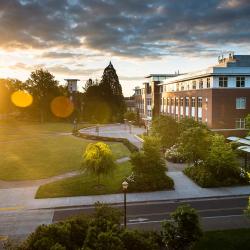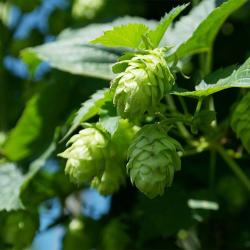
David A. Hendrix
David A. Hendrix
Biography
I studied Applied Math and Physics while an undergraduate student at Georgia Tech. I went on to get a PhD in Physics at UC Berkeley, where I was advised by computational biologist/physicist Daniel Rokhsar, and where my graduate work was in statistical genomics. While I continued to study genomics and computational biology in my postdoc positions at UC Berkeley (regulatory genomics of transcription factors and small RNAs with Mike Levine, now at Princeton) and MIT (regulatory genomics of RNA with Manolis Kellis), during this time I became very interested in RNA. I had several projects related to microRNAs and lincRNAs, and I learned the importance of noncoding RNAs (ncRNA) in gene regulation. As a professor at Oregon State University, I have continued to pursue projects related to ncRNAs. I have led several projects related to microRNA discovery and analysis (miRWoods, DeepMirCut). I have also led a project that created and analyzed the large secondary structure meta-database, bpRNA-1m. To complete the bpRNA-1m project, we had to invent several approaches to annotating and visualizing RNA secondary structures, and we are continuing to develop new approaches to refine the database. I also led a project that trained a recurrent neural network to classify transcripts as mRNAs or lincRNAs based on sequence alone, which involved developing new approaches to thoroughly interpret what the network learned. This work has led to our current projects developing new neural network architectures to decipher protein-coding potential. We have also pursued several other projects related to genomics and transcriptomics in diverse systems.
Research
My research is highly collaborative, and I have had excellent collaborations with both experimental biologists and computer scientists. I can bridge both sides of interdisciplinary research.
Our recent work includes a successfully funded USDA grant using comparative genomics and metabolomics of hop and hemp to identify alleles that are responsible for enhanced or diminished biosynthesis of terpenes. These two plants, hop and hemp, are part of OSU’s research goals, and fit into the history of the campus. Cascade hops and other varieties were cultivated in Corvallis in a collaboration with USDA and Oregon State. More recently, the Global Hemp Innovation Center (GHIC) has been established to help OSU become a leader in hemp research. We recognized the commonality of these two plants as part of the same family, Cannabaceae, and created a project to capitalize on that. We hope that this grant is a seed grant that will lead to further research in uncovering how genes and metabolite biosynthesis are regulated in hop and hemp. Hop and hemp have huge pharmacological potential, both with a long history and bright future in plant-based biomedicines.
We have also received a NIH R01 grant, studying RNA structure and function, and to develop tools and methodologies related to structure comparison and the identification of sequence features related to translation. In this case, the human transcriptome is our main application area, and there is a great deal of potential for uncovering sequence and structural elements that are related to the translation of RNA, and other functions. We expect that we will be able to use the sequence and structures that we uncover to better interpret disease-associated allelic variants that would otherwise be invisible to current approaches.
A third project we have been working on is the effect of blue light on aging and neurodegeneration, using fruit flies as a model system. As part of a collaborative project studying circadian rhythms and aging, we found the unexpected result—blue light was leading to patterns of gene expression, and was actually shortening the lifespan of flies. With ever-present LED lights and screens, the effects of light on our health is increasingly important, and could present future challenges that we must be ready for. We are examining the metabolic and transcriptomic changes due to blue light, and changes to circadian regulators with age.
Teaching
In addition to leading a research lab, I am passionate about teaching and scientific outreach, and I continue to learn ways of being a more effective and inclusive teacher.
BB 345: Python for Molecular Biologists, Fall term
BB 485/585: Applied Bioinformatics, Winter term
CS 261: Data Structures, Spring term
BB 499/599 CS 499/599: Algorithms for Computational Biology, Spring term every 3 years
Awards and Honors
2016 College of Science graduate teaching award nominee
2018 College of Science graduate teaching award nominee
2019 University Mentoring and Professional Development Award
2021 College of Science Dean’s Early Career Achievement Award
2022 Wayne & Gladys Valley Foundation BioHealth Fellow
Outreach
Computational Biology Camp with OSU STEM Academy (2015-present)
YouTube channel “Professor Hendrix” https://www.youtube.com/c/ProfessorHendrix
Education
Postdoc, Massachusetts Institute of Technology CSAIL
Postdoc, University of California, Berkeley
Ph.D. Physics, University of California, Berkeley
B.S. Applied Mathematics, B.S Physics, Georgia Institute of Technology



